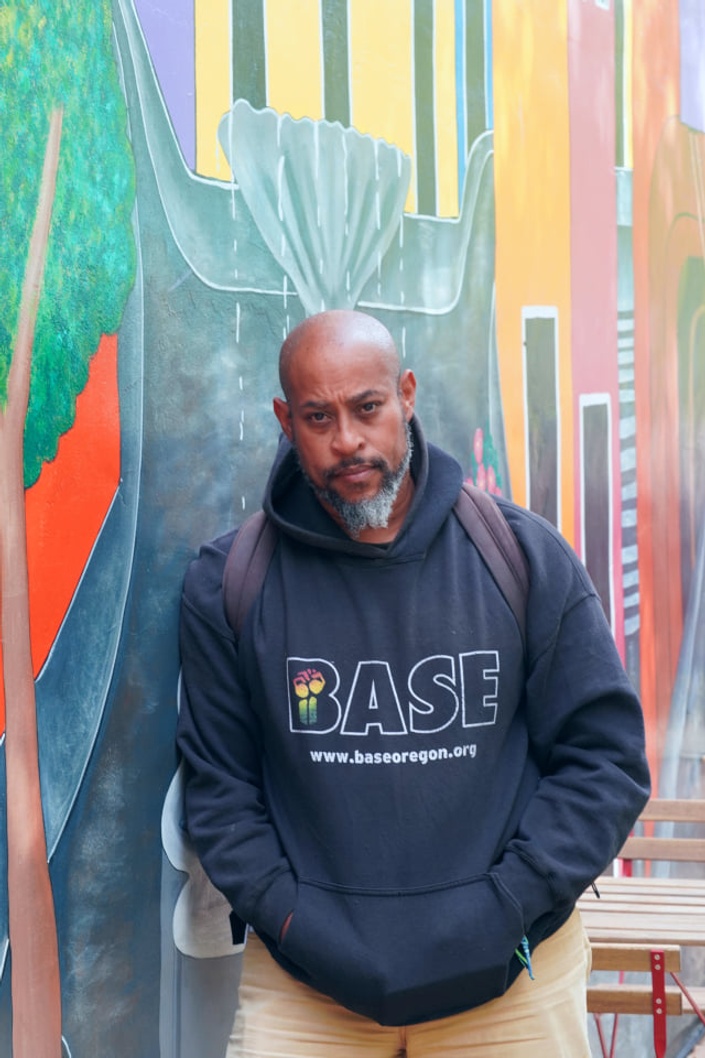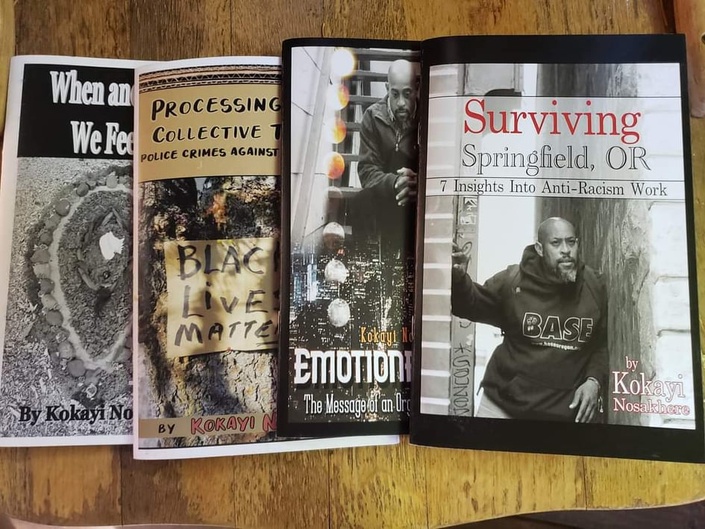
THE 10 BASIC IDEAS
Thank you for choosing to be brave enough to access this level of medicine. Guidance is a gift. When I am asked what I teach, I answer: The ten basic ideas.
What are the ten basic ideas?
This book is the answer to that question. Slowly, anti-racism education is moving away from the intellectual and towards the somatic. What does that mean? It means, if I tell you a story, you can grasp the idea I am pointing towards better than if I lecture you about a specific point. Because I wish to be an effective communicator, this collection of essays are from 2018.
They sound like 2018. They feel like 2018. They have the functional memory of cultural events in 2018. There is purpose behind this choice. Because we are at least four years after said events, the examples I use to describe the basic ideas, hopefully, no longer carry much emotional charge. Some distance does exist. And, I observe, distance is needed.
Upgrade to the Bundle!
Buy in now and save!
What is the epiphany I am referencing in the title of this audiobook?
It is the epiphany that you have been treated like a white person all the days of your life. Some white-bodied persons go 40 plus years of lived experience without ever having said epiphany.
What are you waking up from?
You are waking up from white racial innocence. What is white racial innocence? I am glad you asked. The first chapter seeks to help orientate you, dear Listener, to how white racial innocence creates a mental frame for white-bodied persons to make sense of the American landscape. Entitled, “The Internet Shaming of Whiteness,” it details the heavily muted reaction from a Charlottesville Tiki-torch marcher to being perceived through a racial light. He suffers an acute mental health break.
Let’s be clear. The book begins with a very racial moment.
It is so racial, one cannot escape confronting how race, racism and whiteness land in your nervous system. Most white-bodied persons in America are not prepared to process a racial moment. This is true for those who marched with the tiki-torches.
And, it doesn’t make sense. Many of us can still remember the visceral feeling that flowed through their bodies watching collegiate-aged European American men walking across the University of Virginia’s campus. This happened two years into the Trump Administration. I do not know which was a greater shock to non-racist European America:
1) the existence of young white nationalists or
2) the nature of their grievance. The chant was affirming their right to existence, and not to be replaced.
Think about that. In 2008, while you and I were celebrating Barack Obama being the first Black President of the United States of America, and what that means as progress, those who choose to march were feeling the anguish of being unpopular. They our celebration as their defeat.
To be fair, it was not the single event of the 2008 election which generated this feeling of despair. It is the overall nature of American society. Progress, nowadays, is measured in how few white-bodied males are either in the room or in authority positions. Every congressional election, it is celebrated how many more women, so-called minority ethnic groups and LGBTQIA are now seated. Every two years, the white-bodied person is reminded, America does not like them.
No matter how the “Left” wants to dress this message up in nice words, the outcomes are clear evidence. That evidence is rampantly on display thanks to social media.
For some, the intense negative reaction to the Lord of the Rings including the representation of darker-skinned elves, dwarves and hobbits is enough evidence to reflect the internalization of this replacement theory. For the young white bodied person seeing the Little Mermaid being played by a Black actress hurts in a manner that is hard to articulate. Nor does he, she, they have the means to articulate it. Their pain is not recognized. It appears to be encouraged.
How does it feels to be “white” right now? It feels like being bullied. It feels like oppression. It feels like your perspective is dismissed: like, “We do not care how this makes you feel.” It feels like, we want to see you in emotional or psychological pain. It feels like, yes, we want to hurt you and call it good for you. Please stop screaming in pain so loud. This revenge nightmare has existed in European American since its inception.
In chapter two, we explore how conservative personalities, the comedian, Rosanne Barr, and social commentator, Tomi Lahen, weathered the backlash to Trump personality.
Some white bodied persons were not okay with the open display of white nationalism and retaliated in manners that divide European American.
Chapter three reveals the inner thoughts of a young white male during this time.
Yes, it is unpopular to be “white.” And, yes, it is hard to cope with this unpopularity when you do not have older white-bodied persons who can give you guidance in doing so. All they have is ignorance and denial. Please accept his manifesto as data, as material of what is inside of young people’s heads. It is what they are working with.
Chapter four explores the colonial ritual of Halloween, where European Americans put on the skins of other humans.
This is a holy day for a reason. Blackface and redface appears to be a ritual. So many politicians have to keep apologizing for attending parties in college with blackface or redface on, it is difficult to believe the request to not do so is not well known.
I think chapter five is the most challenging of the collection. What do you do when you confront the real thing: a segregationist.
That is who, or what, Cindy Hyde-Smith, Senator from Mississippi, represented. They are the challenge before those who desire to engage in anti-racism work. It is not standing beside BIPoC in unity and solidarity. It is help the Cindy Hyde-Smith, growth their hearts three times in one night, like the Grinch.
Chapter six remembers the impact of Dr. Robin DiAngelo. She comes from a school of thought stretching back to when the Civil Rigths Movement first interrupted whiteness.
In this chapter, I will share insights for becoming more effective talking to white people about race, racism and whiteness.
And, chapter seven closes out with a demonstration of how to mitigate the harm of an active Nazi member at an active public event.
I was there. This is a firsthand account. IT happened in January 2019. The neutralization of a Nazi at a public event happening in Southern Oregon, all initiated by white-bodied persons, is a miracle. It also proves it can be done.
For those who are ready to go on their healing journey, introspective questions are also included at the end of each chapter. Most people will listen to this audiobook more than one time. It is suggested during the second time that you choose to listen, please stop and answer the introspective questions using the written word. Pen and paper. Make a listing of the basic concepts. Lastly, write out your current understanding of the basic concepts and how they may flow in and around your life.



